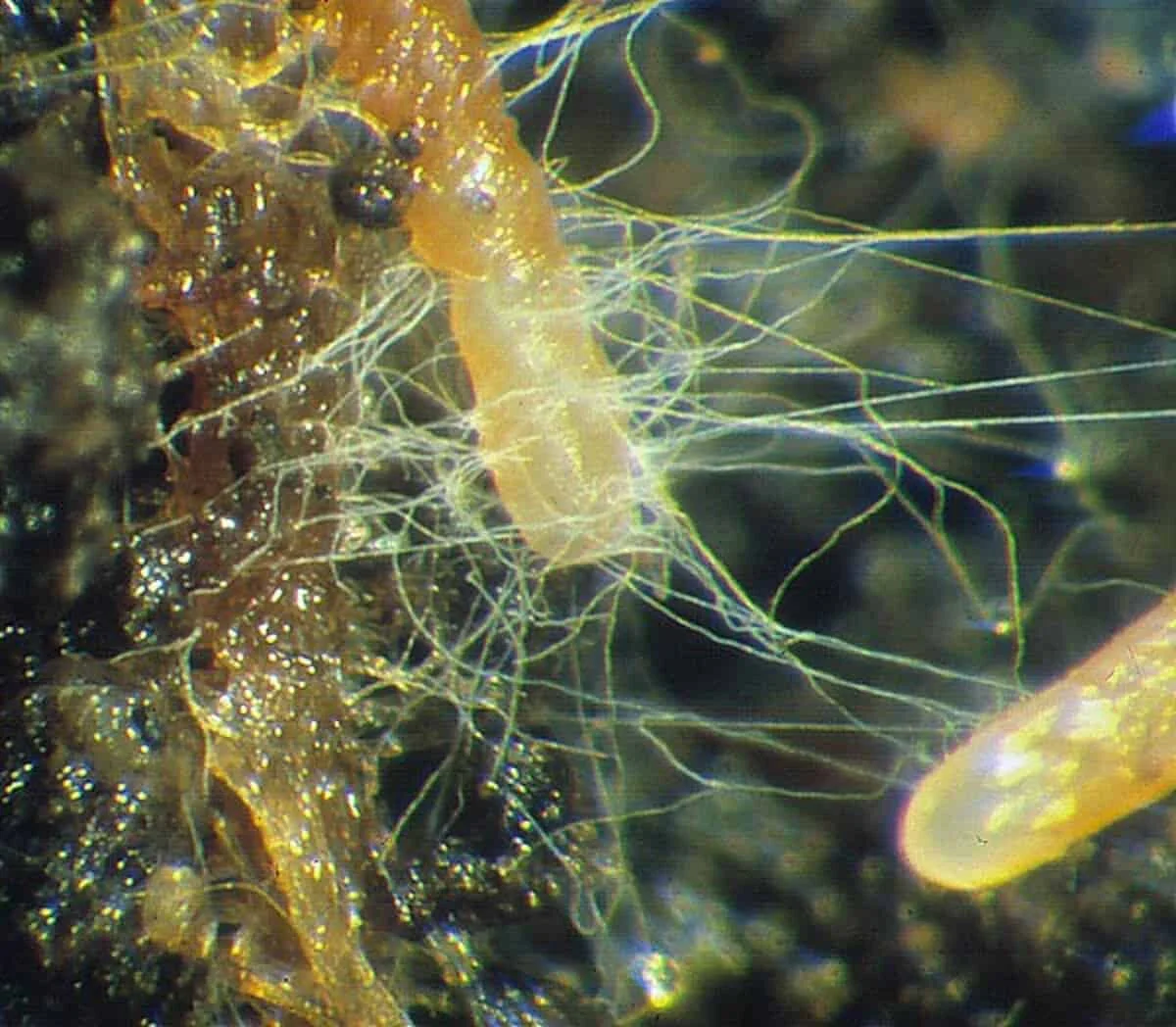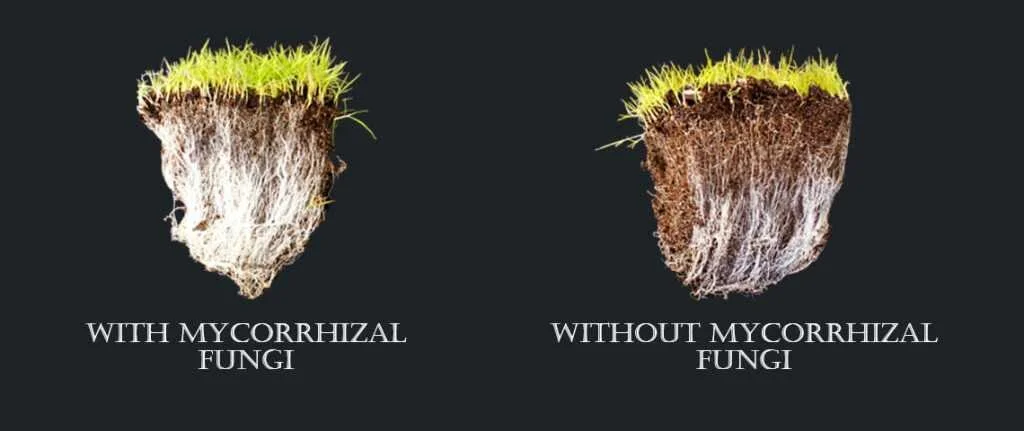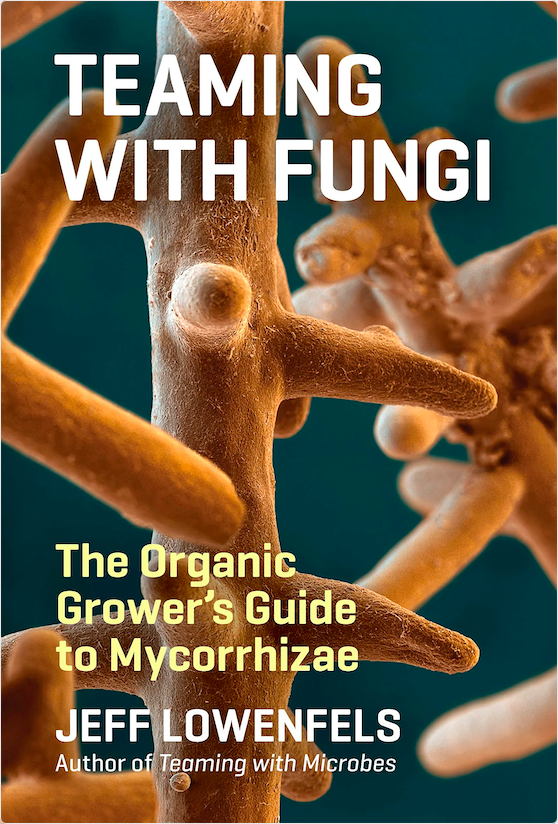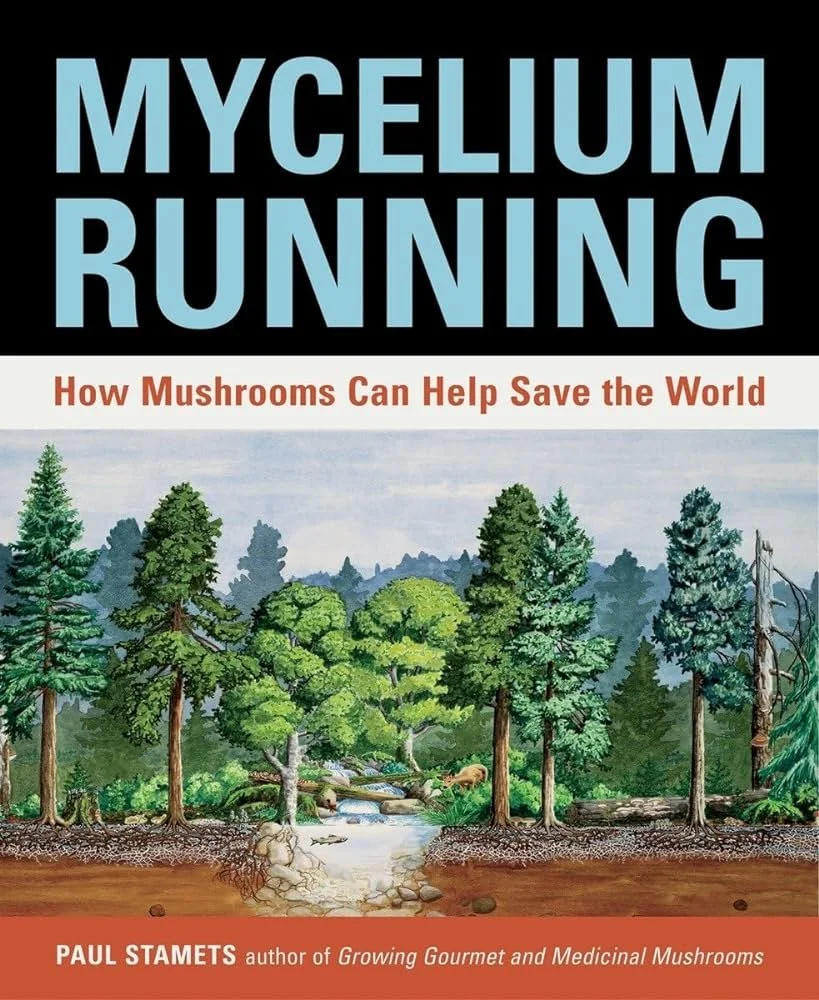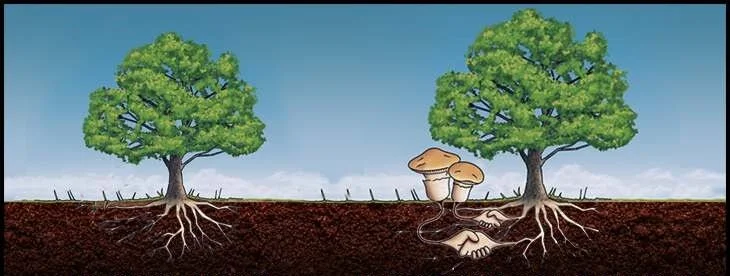Let mutualistic Mycorrhizae help your plants!
This is the story of special fungi, tiny and valiant helpers of our plants.
First, a fungus is made up of tiny filaments called hyphae that come together to form the mycelium. That is a huge network of filaments sometimes so big that it is visible to the naked eye. The fruit of the fungus are called mushrooms. They contain seed-like structures called spores.
The “Decomposers”, the “Bandits” and the “Cooperators”
In the soil, there are 3 main types of fungi:
The Saprophytic fungi are the “Decomposers”. They feed on dead plant and animal remains. Many are extremely beneficial, breaking down this organic material into humus, minerals and nutrients that can be utilised by plants. Without these fungi we would also disappear under a mountain of unrotted dead leaves and logs! Shitake and Champignons de Paris are the fruit of a saprophytic fungus.
The Parasitic fungi are the “Bandits”. They are predators and develop an unbalanced symbiotic relationship with the plant that can endanger its health and/or life. They are often micro fungi but together they can inflict damage on the shoots or the leaves of a tree.
The Mutualistic fungi are the “Cooperators”. They develop a beneficial symbiotic relationship with the host plant. These fungi are divided into endophytic and mycorrhizal fungi. Here we are mainly interested in the mycorrhizae fungi which can be found at the root level of a plant (“myco” means “mushroom”, “rizal” means “related to roots”).
Delicacies of the Fungal Forest
Did you know that the most famous mushroom in the world, the truffle, is the fruit of one of these mycorrhizal fungi? This is also the case with the delicious mushroom called chanterelle. Both of these are also more commonly found in old growth forests where the mycorrhizal activity is much more established.
Mycorrhizae: a nearly universal benefit
About 85% of higher plants can benefit from these cooperative fungi. There are, however, a few plants that do not need this type of help. They only make up a few percent of all plants, notably the Brassicaea family (broccoli, cabbage, cauliflower, Brussels sprouts, radish, watercress, horseradish etc..). Orchids have a specific type of mycorrhizal.
Mycorrhizae: very hardworking assistants
These assistants will do multiple jobs for the benefit of the plants which they associate with.
On the one hand, they will increase nutrient uptake by increasing the absorbing surface area of roots.
The same extensive network of fungal filaments that is important to nutrient uptake, is also important in water uptake and storage.
On the other hand, they will release powerful enzymes into the soil that solubilize hard to capture nutrients such as phosphorus, nitrogen, iron and other “tightly bound” soil nutrients.
In return for this work, these fungi will receive carbon sugars produced by the plant through photosynthesis. They are therefore fungi that live in a symbiotic relationship with the plants which can be called “mutualism”.
Many benefits for the plants and the soil structure
Plants that benefit from this mutualism through these cooperative fungi are found to be healthier, compared to the same species of plants without the fungi linked to their root-system.
They can therefore often grow faster, fruit or flower more, will need less fertilizing and will also be more resistant, especially to drought.
Mycorrhizal fungi also improve soil structure. Mycorrhizal filaments (hyphae) produce organic “glues” (extracellular polysaccharides and glycoproteins, such as glomalin) that bind soils into aggregates and thereby improving overall soil structure and porosity. Soil porosity and soil structure positively influence the growth of plants by promoting aeration for the root system, water movement into soil and root growth.
Mycorrhizae: two type of assistants
On the one hand endomycorrhizae (sometimes referred to as “vesicular arbuscular mycorrhizae”), will penetrate into the roots. 85% of plants that are receptive to mycorrhiza prefer this type of helpers. Endomycorrhizae are difficult to detect without laboratory facilities.
The others, the ectomycorrhizae, will form a structure surrounding the roots which bears the name “Hartig net” and are easier to observe with a naked eye. These latter assistants will be useful for about 15% of plants receptive to mycorrhizae. Conifers, and many North American hardwood trees, have ectomycorrhizal relationships. Overall, those rarer assistants are important in many temperate and boreal forests.
Add a cocktail of mycorrhizae species
Regardless of the type of mycorrhizal fungi, endo or ecto, they usually have a specialty. The ideal is therefore to inoculate the roots with a cocktail of mycorrhizae species so as to provide the plant with the most complete helping team possible. These different species of mycorrhizae provide different benefits to the plant under variable circumstances.
For instance, some species are better at assisting in nutrient uptake, while others are more proficient in assisting the plant with water efficiency, and others are responsible for mitigating toxins and salts from reaching the plant's vascular system.
Research has also shown that different species of mycorrhizae provide different benefits during different seasons, with some doing the heavy lifting early in the growing season, and others kicking in during the warmer drier months, and again others providing benefits towards the end of the growing season or throughout the winter.
Let these fungi work by not overfeeding your plants!
Research shows that high levels of water-soluble nitrogen and phosphorus found in most fertilizer suppress most mycorrhizal activity because it reduces the mutual needs of the host and the fungus. For this reason, it is best not to overfeed your plants with nitrogen and phosphorus.
A cooperative web between trees
Even more astonishing, the mycorrhizae fungi seem to become more intensely involved in trees who are threatened by stress-factors. If the mycorrhizal mycelium network is shared between several trees, an experiment has shown that a tree lacking in nutrients (for example because its foliage has been cut) will receive more help from those fungi.
How to inoculate Mycorrhizae ?
In many soils these fungi are no longer present or diminished in concentration. Therefore, we can help the plants by inoculating the roots as early as possible with mycorrhizal spores and hyphae.
It is only when physical contact is established with the roots that mycorrhizal spores and hyphae will develop. Indeed, it is the root tips that will produce exudates that signal the fungi for colonization. Thus, it is important to place the propagules in the root zone, near actively growing roots.
A good economical option is to inoculate the plant as soon as it is sown. Once the fungi are installed on the young shoot, no need to add more, they will remain present and will further develop and assist the plant in many ways.
For established plants, you can make deep small holes close to the roots and inject a water based solution into the root zone. Simply pouring a mycorrhiza water based solution on the surface of soil is not very effective, especially if the soil is not very porous.
When does the mutualistic Mycorrhizae relationship start?
Mycorrhizae begin to colonize newly emerging plant roots within a couple of weeks after inoculation. The benefits of inoculation start to become more prominent approximately 8 to 12 weeks after inoculation.
Mycorrhizal fungi are not free living soil organisms, they require that symbiotic relationship, meaning they will stay with the plant for the life-cycle of that plant. When annual plants die, or a field is tilled, etc those mycorrhizae do not remain indefinitely, they die along with those plants.
We can help mycorrhizal relationships by planting densely and creating a thick layer of “forest floor” like mulch where possible.
Learn more about Mycorrhizae :
Jeff LOWENFELS, “Teaming with Fungi”, the organic grower’s guide to mycorrhizae, Timber Press, 2017. ISBN:9781604697810
Paul STAMETS, Mycelium Running: How Mushrooms Can Help Save the World, Ten Speed Press, 2005 ISBN: 9781580085793
a pdf listing the plants according to their preferences for endo or ecto mycorrhizae
https://mycorrhizae.com/ American company with a great website and doing lots of interesting research
www.thenutrientcompany.com very informative website also listing plants according to the type of mycorrhizae needed.
Where to buy Mycorrhizae ?
Unfortunately there are very few companies selling mycorrhizae in Europe at the moment.
This British company sells MycorMax, which is a cocktail of several endo and ecto mycorrhizae. Their website is very informative and the owner will answer your questions very fast.
A Dutch company that has mycorrhiza products and mycorrhiza in their mixes of soil enhancers. Also an informative website, but unfortunately more informative in Dutch.
This czech company sells Symbivit. The company is not very informative about the contents of their products. They barely give any information about the type of mycorrhizae they include in their products.
This article was compiled by Miguel COTTON, Jackson KNIGHTS & Hans VLASKAMP. If you have any questions or suggestions, do not hesitate to contact us. miguel@orchardofflavours.com

